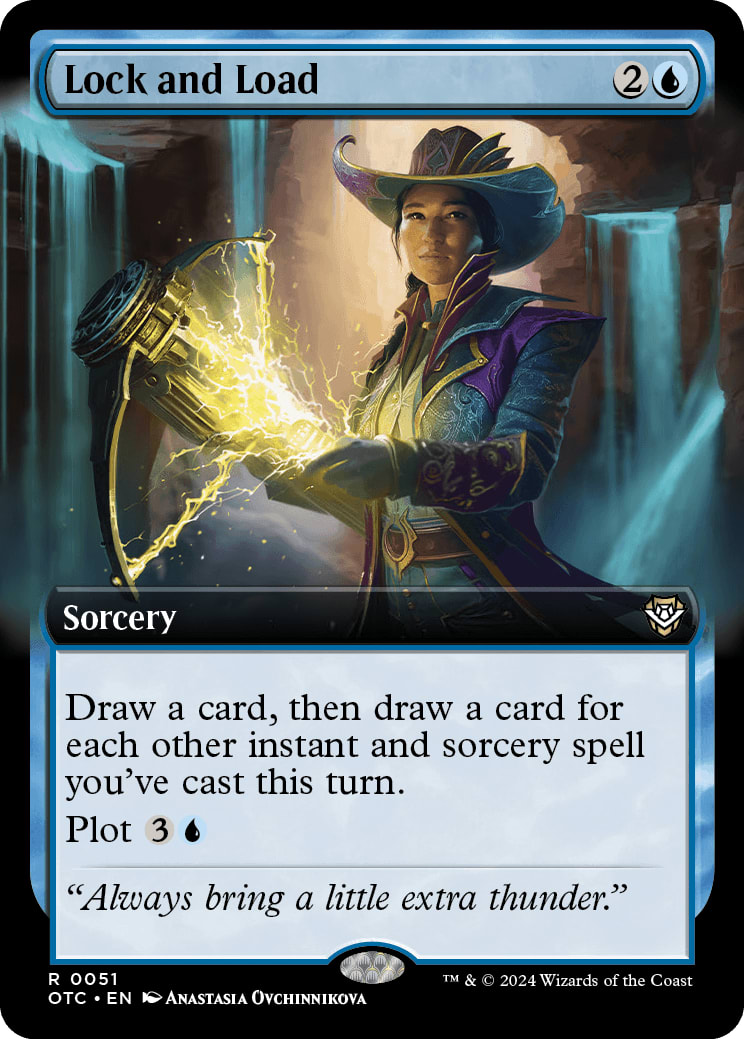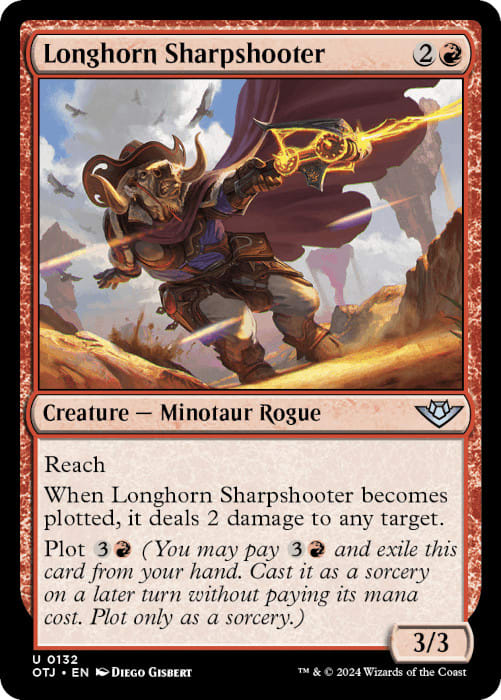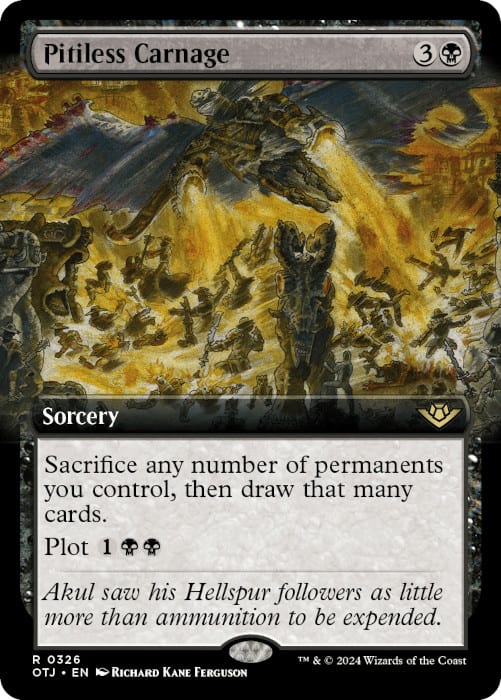Schemes. Plans. Machinations. Good Magic: the Gathering players know how to look at the board state and their Hand, then make determinations about what to do next. The good folks of Outlaws of Thunder Junction do, too, and they do so by way of a new alternative cost mechanic: Plot.
Plot allows you to play a spell for an alternate cost, but instead of casting it, you exile the spell and can cast it later for no mana. Both he Plot and the actual casting must be done on your Main phase when the stack is clear - in other words, at Sorcery speed.
Note you cannot Plot a spell and cast it on the same turn. You must cast it on a future turn. That includes Instants or creatures with flash - you must wait until after this turn is over to play them. Additionally, the spell is Plotted face up, so your opponents will know it's sitting there, waiting to arrive, and they can't do anything about it (meaning they will be filled with a sick dread about what you have planned but also they can plan around it better). Rattlesnakes can warp your opponents' play in ways helpful to you.
Another interesting thing is if you're using Counterspell, you must counter the spell as it's cast for no mana, not when the spell is Plotted.
Plot appears in all five colors. Often, the casting cost and the Plot cost are the same, such as with Unscrupulous Contractor.
Plotting this spell lets you set up a turn later where you sacrifice something less consequential (perhaps you know you'll have a 1/1 Rabbit token next turn you can sacrifice), or you want to draw the cards when you won't have to discard because you'll have used more cards in your Hand or just have access to more mana to cast something.
Sometimes, the Plot cost is cheaper than the Mana Value, where you pay less at the cost of time. Plotting Stingerback Terror on turn three means you have a 7/7 flying trampler waiting to hit for when your hand size has gone down.
Sometimes the Plot cost is more than the mana value, but often it's because you get some value from Plotting the spell, such as with Lock and Load or Longhorn Sharpshooter.
Lock and Load will always draw you at least one card, and if you can cast another spell this turn you can get two out of it. On the other hand, Plotting the spell means you have access to more mana to cast more spells, netting you more cards. And you don't get the Shock with Longhorn Sharpshooter unless you Plot it, of course!
Having Plot is not the only way to Plot a spell. There are six cards which allow cards to be Plotted which don't otherwise have Plot.
- Aven Interrupter
- Fblthp, Lost on the Range
- Jace Reawakened
- Kellan Joins Up
- Lilah, Undefeated Slickshot
- Make Your Own Luck
Each of these spells has its own take. Make Your Own Luck is a great card draw spell which lets you Plot one for free. Fblthp is a Plotting machine, giving you access to the top of your Library in exchange for waiting at least a turn before casting. Aven Interrupter is designed to function as a soft counterspell, but could be used to Plot your own spell if you wish.
There's also a Legendary Creature which cares about spells being Plotted, clearly designed as a Plot Commander. Doc Aurlock, Grizzled Genius reduces the cost of Plotting spells, in addition to reducing the cost of anything cast from your 'yard or exile.
Limited Implications
Options are always good in Limited, and time is often a thing you have in a limited environment, when the games aren't quite so fast and explosive. Being able to set up a turn with Cunning Coyote to get the most out of the Power/Toughness boost and Haste can be backbreaking.
Additionally, Plot lets you use your mana more efficiently. The player who spends more mana is very often the player who wins the game, and Plotting allows you to spend that mana in different and beneficial ways. Plotting a Djinn of Fool's Fall is much better than passing without spending your mana, even if it means you don't get your Djinn until a turn later.
Finally, Plot isn't parasitic - it doesn't require anything else to be good, it just gives you options. This means you don't have to try to force it or require getting more cards to support it. You can just run the Dust Animus you opened pack one, pick one as a 2/3 flier for two (a solid Creature in limited), or you can Plot it and cast it later when you'll hit the five Land trigger, making it bigger and more threatening. Plot is an easy inclusion in most limited decks, as long as the card is doing something you want to be doing already anyway. (Do be careful with trickier cards like Pitiless Carnage; despite the strength of that card in other formats, it'd be a rare Limited deck which wants to sacrifice a bunch of its own stuff, even for such a great price.)
Commander Implications
Choices are always good in Commander, and setting up big plays can be very strong. That Pitiless Carnage can be very strong here. Plot this when you have three extra mana. The next time you're going to Wrath the board, cast this to sacrifice your own stuff and draw cards, then wreck the board for everyone else.
Make Your Own Luck seems like a great way to cheat something huge into play, even if it takes an extra turn. Cast Long-Term Plans, maybe, and put an Eldrazi Titan or Omniscience three from the top, then Make Your Own Luck to plot it for free? Seems good.
Outcaster Trailblazer will find a home in any deck which wants Guardian Project, and being able to Plot it can make for a nice turn later with a pseudo-Lotus Cobra ability. Railway Brawler is a shoo-in for Xenagos, God of Revels or any other deck which wants big power. And I imagine Jace Reawakened will find his way into some Commander decks.
Much like with limited, because Plot isn't parasitic we can run Plot cards in Commander which make sense for our decks without having to have a big theme, However, a deck around Doc Aurlock using a bunch of Plot cards as well as Flashback and other Graveyard mechanics could be a lot of fun - people will see what you're up to, but structuring big turns and making your schemes come together can be great fun!
Thanks for reading.





























